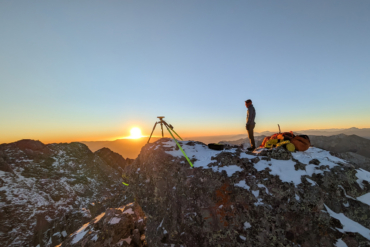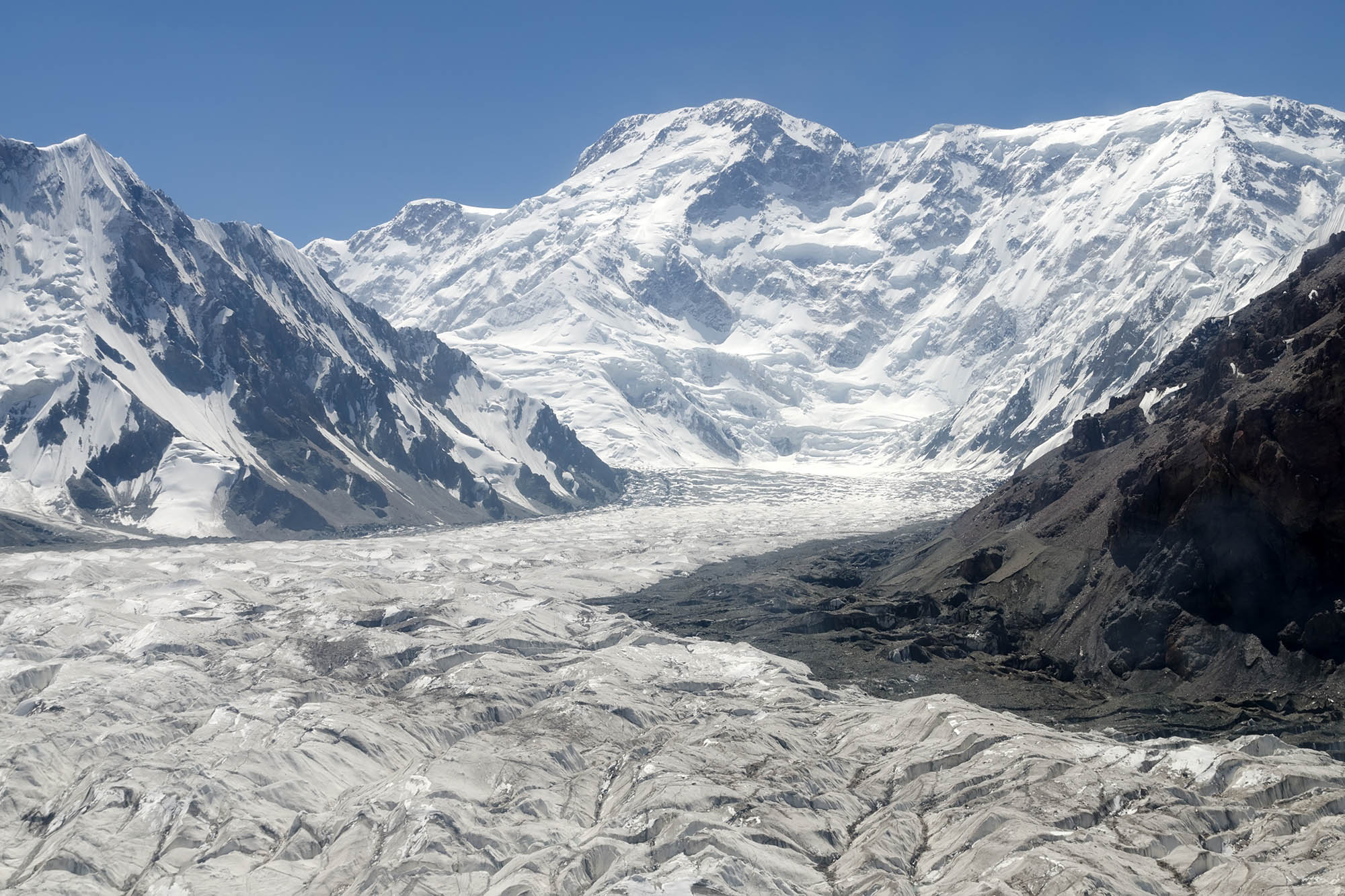Climbing 14,000-foot peaks, known as 14ers, is a popular activity for burgeoning climbers and serious mountaineers alike. Be ready when you head up your first 14er (or your hundredth) with this must-have gear list.

Fifty-four official peaks, more than 760,000 feet of vertical gain, and over 600 route variations, including technical and multi-summit combos: Colorado’s backyard is chock full of lung-busting summits that tower 14,000 feet or higher.
“The number of people hiking 14ers is no doubt growing, based on population growth and the popularity of mountaineering and outdoor sports in general,” said Colorado Mountain Club’s Executive Director, Scott Robson.
Mandatory Gear for Climbing a 14er
Just getting started? Make sure to study and choose your route in advance, check the weather, and pack the essentials before you hit the trail. Head up early and get off the mountain before afternoon lightning storms hit.
(Note: This gear list does not include equipment for winter or technical ascents.)

I am a climber and outdoors lover, a Colorado native who has summited 35 of our state’s 14er mountains. I created this gear list with Maddie Crowell, founder of MTN Babes, which is a project that connects peak-bagging women (and leans on the #mtnbabes tag). Crowell has topped out on each 14er, and she summited more than 70 peaks in the summer of 2014.
Crowell’s advice: “Organize your gear the night before you go. You have to get up really early to climb these mountains, so it helps to be ready in advance, and it also helps with the mental preparation.”
Beyond that tip, here are our 10 essential pieces of gear. Bring these on every 14er for a safer, more enjoyable trip to the top.
Sun (and Skull) Protection
Sunscreen, lip balm with sunscreen, billed hat, and sunglasses. If the 14er is covered with rotten, loose rock, wear a climbing helmet, too.
First Aid
Moleskin is the classic for blisters, but our new favorite is Wuru Wool. It’s a light, comfortable, blister-preventing workhorse. A knife, adhesive bandages, compress dressings, antiseptic wipes, bandana, fire starter, waterproof matches, toilet paper, elastic bandage, duct tape, anti-inflammatory drugs (for a sprained ankle, headache, etc.), heat reflective emergency survival blanket, duct tape, and water purification tablets are items that should get you through most predicaments.

Gloves and Hat
Even in the summer, bring a warm hat and gloves. It is almost always cold at 14,000 feet even if it’s scorching down below. Gloves also come in handy for sudden snowfall or for hand protection while scrambling.
Food
Climbing thousands of vertical feet requires serious fuel on the ascent and descent. Pack dense, easy-to-carry, high-calorie foods like nuts, meal bars, cheese, beef jerky, or sausage. Some hikers love a candy bar at the top—why not? Also consider stowing a delicious snack at the car or tent for afterwards, like an electrolyte beverage and fresh fruit.

Water
Avoid dehydration. Use a bladder—not bottles. The hose provides hands-free, easy access. A 2- or 3-liter bladder is good, depending on the distance. Consider carrying a second form of water purification in addition to purification tablets, such as the Katadyn Hiker Water Microfilter. Prior to a long trip, study maps and trip reports to estimate at which miles you will have access to a fresh water source.
Headlamp (and Weather)
If you have a lot of ground to cover, you may need to start hiking before sunrise. The safe rule of thumb is to be off the summit by noon, before the typical afternoon thunderheads arrive. Check out our favorite headlamps and get ready for an early morning.

Resources (Including Map & Compass)
Cell reception doesn’t always reach the high country, so don’t depend on it. Many 14ers don’t require route-finding skills with a map and compass, but it’s good to carry a map or a copy of the route. And bring a compass, as it’s easy to head down the wrong trail or drainage, especially in low light or during bad weather.
“You don’t want to get out there and get totally lost,” said Crowell.
Study “Colorado’s Fourteeners: From Hikes to Climbs,” by Gerry Roach, and recent 14ers.com trip reports, trail, and trailhead conditions.
“I cross-reference the 14ers.com website and Gerry Roach’s book. I print out the trip report to carry it with me, or from the 14ers.com app I screenshot the route to my phone,” said Crowell.
Here’s an additional tip: turn your phone on airplane mode to help save battery life.
Search and Rescue
In the Centennial State, hikers can purchase the “Colorado Outdoor Recreation Search and Rescue” (CORSAR) card, which covers the cost of search and rescue (but not medical care). Such rescue missions can accrue a bill that’s thousands of dollars. This five-year card costs $12, and the leftover funds help support the rescue team’s training and equipment. Buying a hunting/fishing license, or boat, snowmobile, or ATV registration also contributes to the fund.
Be sure to share your trip plan with someone at home. Include your expected departure and return times, the names of the people in your group, and the route you intend to climb. Don’t rely on cell service, although your phone may work on some peaks. Be proficient and ready to self-rescue in the event of an emergency. Don’t call search and rescue because you’re “tired.” Believe us, it happens.

Clothing Layers
Wear a synthetic or wool t-shirt followed by a light base layer. Wear or bring a fleece or similar midlayer, and a light, compressible puffy jacket. Finally, some kind of rain or wind shell will be critical if weather turns or winds start to howl. Wear quality wool socks (don’t overlook these fan-favorite Costco socks). You’ll see folks in both long pants and shorts, but pants provide extra protection from loose rock and weather.
Don’t wear cotton, which holds moisture and doesn’t insulate when wet.
Hiking Shoes
Hiking 14ers requires long days on the trail filled with a mix of conditions like dirt, rocks, slick boulders, river crossings, and sharp scree. Folks choose everything from trail running shoes to mid-weight boots for summer climbs.
The journey could require some bouldering moves, narrow traverses, and scrambles. I recommend lightweight footwear with a grippy outsole, beefy tread, great foot support, and good breathability. Consider waterproof and ankle-high protection, too. Of course, what’s most important is finding a pair that fits your foot well. Try on a dozen!
(Optional) Trekking Poles
“For long approaches — especially among the Collegiate Peaks — hiking poles can be so helpful,” Crowell notes.
If you need help choosing, check out our round up of the best trekking poles.
Next, all you need to do is tie your hiking boots or cross-trainers and get yourself to the trailhead.
Be prepared, stay humble, climb safe: “Climbing is dangerous, and each individual should approach these peaks with caution”—Gerry Roach, Colorado’s Fourteeners: From Hikes to Climbs. Note: Statistics are based off of the aforementioned guide, by Roach, unless otherwise noted.








